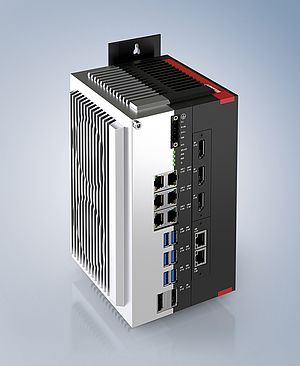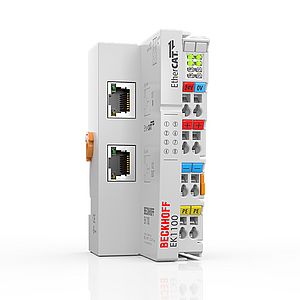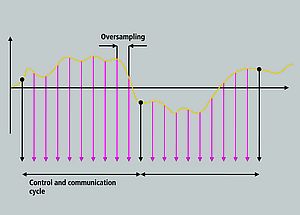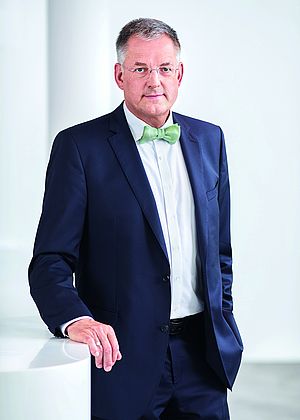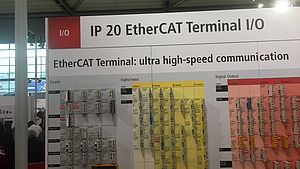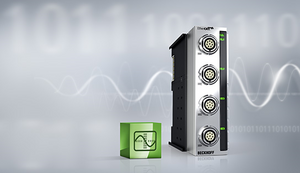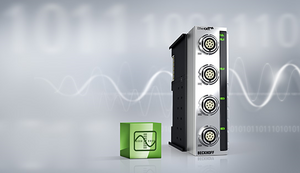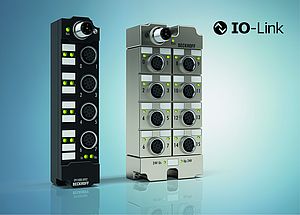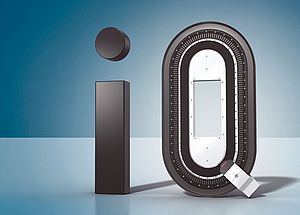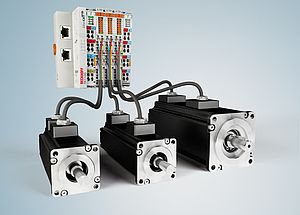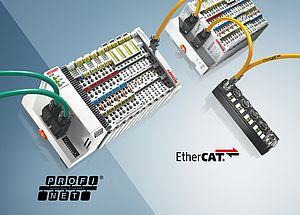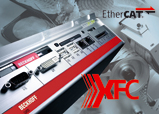People are sensitive beings: not only their comfort, but also their performance level and motivation depend on the climatic conditions in their environment. For this reason, more attention is paid to achieving a pleasant room climate when planning and technically equipping buildings today. To this end, building automation from Beckhoff optimally controls the climate in the Etech Centre located in Linz, Austria.
With the Etech Centre, the company's new headquarters, one of the most modern commercial buildings in Linz opened its doors in March 2010 - and not just for Etech itself, but also for several external tenants. Only 40% of the total 12,000 sq. meters of floor space are used by the building owner itself; the rest is divided between several other companies. As with human beings, it is the "inner values" that count most with buildings. Much attention was paid to these, even during the planning phase. After all, Etech Managing Director, Klaus Schmid's vision was to construct an energy-efficient office building that respects the health, comfort and efficiency of its users.
Sustainability, comfort and cost efficiency
With the Etech Centre, those responsible have successfully achieved the difficult balancing act between cost-efficiency and sustainable building automation. The project was implemented after just a few months thanks to the perfect interaction among Etech, AMS Engineering and Beckhoff. The driving force to a large extent was proxy holder Norbert Kaimberger: "I want to create an energy-efficient building with a pleasant room climate that results in low maintenance costs and appropriate lifecycle costs." In implementing the required refinements from the Etech Centre, AMS Engineering demonstrated what is possible in a building in terms of software: Control of light and climate with precision down to a single workplace, but with as few sensors as possible (which could fail) and a software solution that speaks to each device in its "native language". In the specific case of the Etech Centre, this meant that the Beckhoff controller employed here had to understand or learn to understand seven bus systems: EIB, Modbus, MP-Bus, TCP/IP, DALI, M-Bus and RS485. The CX1020 Embedded PC from Beckhoff has proven itself as control due to its openness in particular. "The ingenious thing about the Beckhoff solution is that we can take the optimal bus system for each application, but still handle everything centrally as if it were a normal input or output wired directly to the controller," explains Project Manager Martin Schwarzenberger of AMS Engineering.
Control of lighting and HVAC with precision down to the single workplace
Regarding the energy supply, a dual system was ultimately conceived: There is a remote heating connection for consumers that require high temperatures and additionally for peak coverage, or a heat pump for consumers for whom low temperatures suffice. The controller for the climatic conditions in the individual rooms is well-thought-out down to the smallest detail. Heating, cooling, dehumidification, ventilation, shading or lighting take place according to needs - but this is all absolutely clever and precise down to a single workplace. In order to implement this, a total of seven CX1020 controllers from Beckhoff were used. These coordinate, for example, the motion detectors installed in each room which, combined with the PC mouse and keyboard recognition, are responsible for presence detection at each workplace. Furthermore, there are special wall elements made of clay that assist in dehumidifying the rooms, escape balconies that act as fixed shading or three brightness sensors permanently mounted on the roof that precisely register the current position of the sun. The advantage of this observation: "We can make 500 Lux available precisely for each workplace. Thanks to the motion detectors we know where and when someone is present and we can then calculate the optimum brightness on the basis of the position of the sun and shade and make it available," explains Project Manager, Martin Schwarzenberger.
Approximately 20,000 measured values are recorded in ten milliseconds
Approximately 20,000 measured values are recorded in ten milliseconds or passed on accordingly in the Etech Centre in Linz. For example, the temperature is lowered automatically by one degree in winter or left warmer by one degree in summer if nobody is in the office. "A total of 50 to 60 parameters can be adjusted for each room, extending from the desired temperature setting and individually adjustable follow-on times through to various lighting scenarios," describes Project Manager, Martin Schwarzenberger.
The primary advantage of sophisticated building automation is that everything is virtually self-regulating, therefore, light switches could be omitted. In the Etech Centre in Linz they have been retained although the lighting is controlled by motion detectors and the corresponding background technology. But since the employees should nevertheless be urged to switch off the light when leaving the office, the light switch has been converted to an energy saving button: "In truth, humans are still the best sensors. A person knows whether they will be coming back or whether they are leaving the room for a longer period of time. In that respect you still have to allow him a certain amount of leeway," says Etech proxy holder, Norbert Kaimberger. However, the tenants have no direct "right to a say" when it comes to the room temperature: Although they can announce possible wishes to the plant room, they are not given any opportunity to make changes themselves to a corresponding controller. The reason: the room temperature setting must be coordinated throughout the entire building with the heating system in order to harmonize comfort and energy efficiency.







